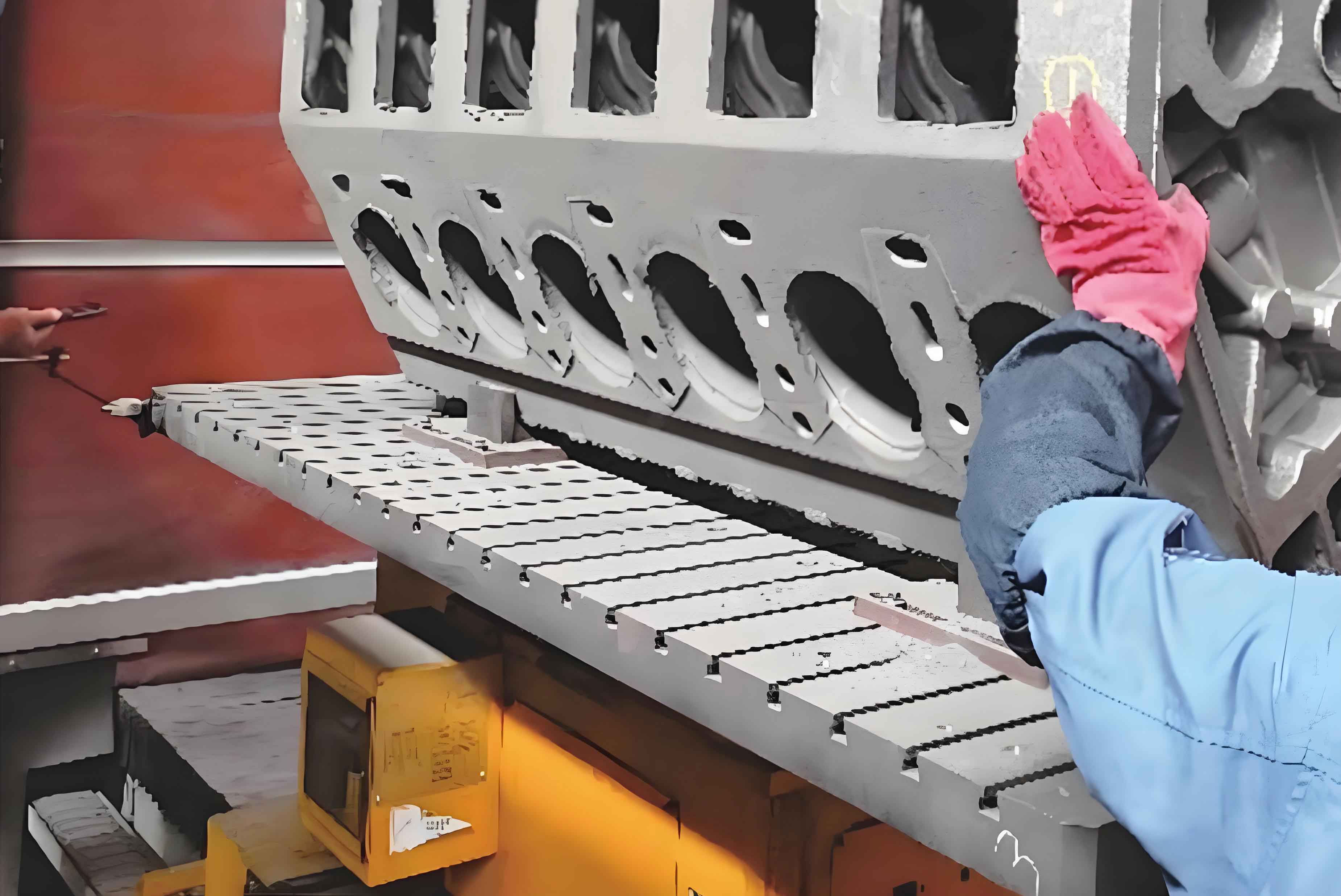Modern foundry engineering faces critical challenges in manufacturing complex aluminum components like engine cylinder blocks, particularly for electric vehicles requiring lightweight designs. This paper presents a comprehensive process optimization methodology using tilt gravity casting to address solidification defects in thin-walled structures with significant wall thickness variations.

1. Thermal Dynamics of Solidification
The fundamental challenge in engine cylinder block casting arises from non-uniform cooling rates. The solidification time differential between thick and thin sections can be modeled using Chvorinov’s rule:
$$ t = B \left( \frac{V}{A} \right)^n $$
Where:
– \( t \) = Solidification time
– \( V \) = Volume of casting section
– \( A \) = Surface area
– \( B \), \( n \) = Material constants
For ZL101A aluminum alloy, typical values range:
$$ B = 2.1-2.5 \, \text{min/cm}^2 $$
$$ n = 1.5-2.0 $$
2. Process Parameter Comparison
| Parameter | Original Process | Optimized Process |
|---|---|---|
| Pouring Temperature | 710°C | 695°C |
| Mold Tilt Rate | 3°/s | 2.5°/s |
| Riser Volume Ratio | 38% | 22% |
| Yield Strength | 215 MPa | 238 MPa |
| Porosity Defects | 12.7/cm² | 1.3/cm² |
3. Fluid Flow Analysis
The modified tilt casting process for engine cylinder blocks follows the Reynolds transport theorem:
$$ \frac{D}{Dt} \int_{CV} \rho \phi dV = \int_{CV} \frac{\partial}{\partial t}(\rho \phi) dV + \int_{CS} \rho \phi (\vec{v} \cdot \vec{n}) dA $$
Key flow parameters:
– Critical tilt angle: 55°
– Optimal gate velocity: 0.8-1.2 m/s
– Froude number limitation: \( Fr \leq 0.6 \)
4. Microstructure Prediction Model
The secondary dendrite arm spacing (SDAS) in engine cylinder blocks correlates with cooling rate:
$$ \lambda_2 = a(\dot{T})^{-b} $$
Where:
– \( \lambda_2 \) = SDAS (μm)
– \( \dot{T} \) = Cooling rate (°C/s)
– \( a = 48.6 \), \( b = 0.33 \) for ZL101A
5. Multi-objective Optimization
The casting parameters for engine cylinder blocks were optimized using response surface methodology:
$$ \text{Minimize: } f(x) = w_1P + w_2S + w_3D $$
$$ \text{Subject to: } 690°C \leq T_p \leq 710°C $$
$$ 2.0°/s \leq \omega \leq 3.5°/s $$
Where:
– \( P \) = Porosity index
– \( S \) = Shrinkage factor
– \( D \) = Distortion metric
– \( w_i \) = Weighting factors
6. Mechanical Property Enhancement
The optimized process for engine cylinder blocks achieves superior mechanical properties through controlled solidification:
$$ \sigma_y = \sigma_0 + k_y d^{-1/2} $$
Where:
– \( \sigma_y \) = Yield strength
– \( d \) = Grain size
– \( \sigma_0 = 150 \, \text{MPa} \), \( k_y = 0.21 \, \text{MPa·m}^{1/2} \)
7. Industrial Implementation Results
| Metric | Improvement | Measurement Method |
|---|---|---|
| Casting Yield | 127% increase | Mass balance analysis |
| Energy Consumption | 18% reduction | Thermal imaging |
| Dimensional Accuracy | ±0.25mm tolerance | 3D scanning |
| Production Cycle | 22% reduction | Time-motion study |
The developed methodology demonstrates significant improvements in engine cylinder block manufacturing, particularly for electric vehicle applications requiring high-integrity aluminum castings. Future work will focus on implementing real-time solidification monitoring using advanced sensor networks.
